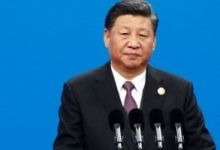
Social Media pages are full of the “Foreign Policy” scandal that the Brotherhood itself has been promoting. However, the unprecedented growth and credit ratings of the Egyptian economy. But an article by The former Brotherhood Minister of Investment “Yahya Hamed” paid by the Muslim Brotherhood in the “Foreign Policy” magazine, questions the Egyptian economy and claims that Egypt is on the edge of bankrupt. In an attempt to demoralize achievements and distort the image of Egypt and its economy. This way is not new, or surprising for the MB terrorist organization and its Social Media agents in Egypt and around the world. But the hardness of the matter is that it comes from a prominent magazine like the “Foreign Policy”, a magazine is supposed to adheres to European values of neutral and impartial information.
There is no question that Egypt post June 2013, is privileged with the opportunity to build a modern, free, democratic and prosperous society for all Egyptians. While the transition period has been characterized by the stabilization of the state, pillars and the restoring its political stability – these are the growing and stability pains – all transitions were difficult. In all his speeches to his people on various occasions, President El-Sisi stresses that the Egyptian people are the real hero behind the achievements of the financial and monetary reform efforts. He also reaffirms the insistence of the Egyptian people on completing all the reform steps ( including social, economic, institutional, legislative and administrative aspects) for the Egyptian economy to deal with the structural problems it has suffered from for more than three decades and to launch the prospects for comprehensive and inclusive growth for all groups.
On June 30, 2013, Egypt was subject to economic collapse with the depletion of resources and reserves and the disruption in the provision of resources and fuel coincidently with the expectations of an unprecedented budget deficit, in addition to the international isolation in the economic sphere, beside, the decline in production and confidence in the future.
The vulnerability of the Egyptian economy during this period were represented in the following aspects:
- The decline in economic activity especially in the leading sectors such as manufacturing, construction, and tourism.
- The decline in private sector activity and its contribution to the growth of GDP due to the lack of confidence in the investment climate and the lack of transparency of the political and legal path of the country.
- The decline in domestic and foreign aggregate demand as a result of the slowdown of economic growth, low production and the exit of foreign investments.
- The decline in foreign exchange resources, which the Egyptian economy relied on mainly in the formation of reserves, especially the returns from tourism and the export earnings and exports of services.
- The high cost of production as a direct result of security disturbances and the difficulty of obtaining foreign exchange for importing strategic commodities.
- The severe deceleration of decision-making within government departments and official bodies as a result of ongoing policy changes.
Thus the fiscal year 2012/2013 ended on 30 June 2013 and the Egyptian economy has reached a dangerous stage and high probability to collapse, where the economic growth rate fell to 2.1% and the unemployment rate rose to 13.2% and the fiscal deficit as a percentage of GDP reached 13.7% and domestic debt rose as a percentage of GDP. Poverty rate increased to reach 26.3%. The foreign exchange reserves of the Central Bank of Egypt declined to 15 billion dollars and the trade balance deficit widened to reach 31.7 billion dollars.
The fiscal year 2013-2014 witnessed the state’s recovery & the institutions cohesion following two revolutions, as well as the implementation of the road map to achieve political stability &face internal and external security threats, bringing back the confidence in the Egyptian economy. A large number of projects have been designed to encourage competition, notably the Tenders and Auctions Law, the amendment of the Competition Law and the prohibition of monopolistic practices.
A new reform phase began in July 2014 that witnessed strong reform measures related to restructuring the energy subsidy system (electricity and petroleum products), and was followed by an expansionary fiscal stimulus policy to stimulate the Egyptian economy that had been injected in development national projects.
The economic and social consequences of the political changes faced by the state prior to the political stabilization phase, which began relatively early in 2014, represented a strong impetus for initiating economic measures to reduce the continued deterioration of the previously mentioned macroeconomic indicators.
The economic and social consequences of the political changes faced by the state prior to the political stabilization phase, which began relatively early in 2014 with the first term, represented a strong impetus for initiating economic measures to reduce the continued bleeding of the previously mentioned macroeconomic indicators
In addition, the state has begun to pay careful attention to social protection policies & programs, specifically with regard to social safety nets or social assistance, which target the poor and vulnerable groups such as cash or in-kind remittances for poor families, such as taking several good steps in the implementation of a new bread subsidy system, and the implementation of a new program of conditional cash transfers «Takaful and Karama».
As of January 2014, the government has decided to increase the monthly payment of social security assistance by 50% to cover more than 825 thousand poor families, bringing the total number of families benefiting from this program to 2.3 million families, slightly less than half the number of poor families.
That increase were derived from reforming the energy-in-kind subsidy system, whose reform is no longer a must, not only for its financial sustainability (the ability of public resources to continue to cover subsidies), but also for the system’s inefficiency (Not reaching & benefiting an important sector of the poor, and from whom the benefits went to the rich people are reduced). For example, more than 70% of gasoline subsidies go to the richest 10% of the population, about 60% of natural gas support and more than a third of electricity subsidies goes to the richest 20%.
With the start of the year 2016, the economic imbalances facing the economy have intensified. The exchange rate has become increasingly volatile in the light of the decline in foreign exchange resources in the country, as a result of the higher demand for foreign exchange, the fiscal deficit as well as domestic and external debt have widened, and fiscal measures have failed to bridge the gap between revenues and public expenditures.
In order to address the previous imbalances, the Egyptian government has introduced a number of quick solutions aimed at boosting economic growth, employment, financial and monetary stability. The program included key aspects, including the adoption of a flexible exchange rate regime and the consolidation of public finance, through measures to achieve fiscal discipline through several measures, among them the reform of the subsidy system and public goods and services. In addition to strengthening the social protection & safety nets and improving the investment climate.
In 2016, the Egyptian government embarked on a comprehensive economic reform program in cooperation with the International Monetary Fund (IMF) and a number of other international financial institutions in an attempt to address the extensive distortions suffered by the Egyptian economy. The Egyptian Central Bank announced in November 2016 the liberalization of the value of the Egyptian pound against foreign currencies. The Egyptian government also strengthened its move toward liberalization of the fuel and electricity subsidy system and other public goods and services, while the government also announced a new package of incentives to encourage investors to inject capital into the Egyptian market.
Thanks to the successful implementation of the National Economic & Social Reform Program, six credit rating agencies have confirmed confidence in the Egyptian economy over the reform schedule, summarized as follows:
- November 2017: Standard & Poor’s upgraded Egypt’s rating to positive at -B
- January 2018: Fitch report raising the grade from stable to positive and rating B
- May 2018: Standard & Poor’s report raises Egypt’s rating to positive from -B to B with a stable outlook
- August 2018: Moody’s raised the outlook from stable to positive at B3
- 2018: Moody’s lifts Egypt rating from B3 to B2
- March 2019: Fitch raises the rating from B to B + with a stable outlook
Bloomberg reported that Egypt has become a safe resort for foreign investors, despite the depreciation of most of the international currencies against the dollar, with the Argentine peso, the Turkish lira, the South African rand and the Brazilian riyal. Egypt has maintained its attractiveness fot investment in government debt instruments.
Egypt has obtained the first five tranches of the IMF loan program despite claims that its economy is not on the right track and is being vulnerable to collapse, according to an article recently published in the Foreign Policy. The question is why do international institutions trust the Egyptian government’s commitment to implementing reforms?, and what calls upon it to pay tribute to the reform efforts that have been made over the past three years, especially after rearranging priorities of public spending in a way that allowed to increase both investments and spending on social protection programs, without prejudice to the financial targets and the declared debt targets. Meanwhile, disclosure of the financial targets are published periodically.
Let us assume, for a moment, that the Egyptian economy is not on the right track and that economic reform has not achieved its objectives. So why did the Egyptian economy withstand the crises that hit the emerging markets in August 2018? Most of these countries are already suffering from large debt burden denominated in US dollars?
Why did not the Central Bank of Egypt raise interest rates like those countries during the peak of the emerging market crisis, while we saw Argentina raise interest rates to 40% & 60% respectively? Why was the attractiveness of the Egyptian economy concerning investment in government debt instruments not affected?
Why has not Egypt been among the 13 countries that are on the BIS top list since it has a high debt burden denominated in US dollar, like many emerging economies?
Why Egypt was the only country according to the recent Financial Times (March 2019) report that its debt has improved and has not been classified as unsustainable or among the high-risk countries like the other 32 countries currently have been classified by the International Monetary Fund, and are more than double those the risk-weighted countries in 2013?
Over the last three years, Egypt has committed itself to implementing an ambitious national economic reform program aimed at correcting external and internal imbalances, stimulating growth, creating jobs and increasing targeted social spending. While continuing to implement structural, institutional and legislative reforms, despite the pressure of the volatile global economy, the unfavorable environment to global growth and emerging market crises that led to national currencies depreciation. beside the severe tests that the monetary policy have been subjected to for which the Egyptian economy has successfully went through.
Strong countries are those that build their resilience to external shocks as well as their domestic shocks, and their monetary policy has options to protect themselves. The evidence for this argument can be demonstrated by the way the Central Bank of Egypt responded to the emerging market crisis. It did not drift to the race to raise interest rates during the wave of foreign investors exit. Finally, the key issue for investors in emerging markets is related to sound and solid economic fundamentals.
Since the reform program plan explicitly states that social protection is the cornerstone of the program, therefore for strengthening social safety nets additional spending that accounts for a 1% of gross domestic product should be disbursed on food subsidies and cash transfers to the poor. In this context, the social measures’ package announced by President Abdel Fattah al-Sisi (7 decisions in 2018 and 7 other decisions in 2019) has established a new social contract between the state and the Egyptian society. This, therefore, reflects the president’s appreciation of the sacrifices made by the great Egyptian people, who are the real hero behind the success of the economic reform program. They bear much to restore confidence in the Egyptian economy and put it on the right economic path so that they can secure their economic future and reap the benefits of this comprehensive reform not only for the current generation but for future generations as well.
The implementation of the social measures’ package, which the president has set, for July 1st at a cost of 60 billion pounds, includes about 30.5 billion pounds to finance wage and salary increases, 28.5 billion pounds to finance social pension increases, and about 1 billion pounds to finance 100,000 new families for the Takaful and Karama program.
Finally, without the great economic reform undertaken by the great Egyptian people, it would not have been possible to formulate & design radical solutions to the chronic and difficult economic problems that have accumulated over many decades without real and radical solutions. The confidence of the people in their leadership paved the way for the successful implementation of reform.













